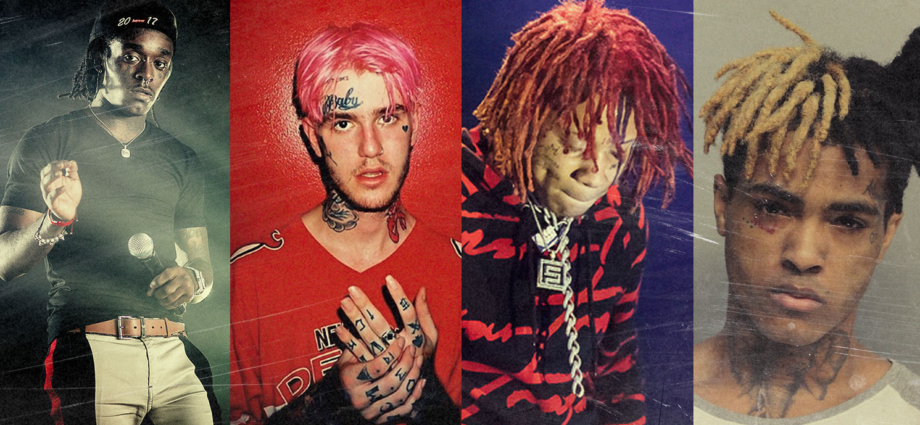Throughout history, creative expression has served as a powerful outlet for individuals to convey their unique emotions. Whether it’s the infectious joy depicted in works like Winnie the Pooh or the serene gentleness captured in Bob Ross’ paintings, the ability to express emotions through various mediums is truly remarkable.
However, alongside the positive aspects of creative expression, there exists a darker side. Over time, people in pain have found solace in themes of negativity, particularly through music. Sharing their struggles and hardships through sad melodies has allowed individuals to feel a profound sense of connection in their shared experiences. Even if it’s just for the duration of a song, listening to sad music has offered comfort and healing to many. In this article, we will delve into the world of “emo rap” music, exploring its current state and discussing its impact. Perhaps, through this exploration, you will uncover a new realm of music that has yet to be introduced to you.
Bones: The Pioneer of Emo Rap and His Impact on the Genre
To understand emo rap, we must trace its origins back to its early days. The genre draws inspiration from rock, metal, and rap groups that have emerged over the past three to four decades. Artists such as Metallica, Linkin Park, Lil Wayne, Eminem, and countless others have played a significant role in shaping the sound of the 2000s, which many consider as the starting point of emo rap. While figures like Casper, Yung Lean, and Kid Cudi may not have been initially labeled as emo rappers, they contributed to the development of this genre by incorporating melancholic lyrics, rock-infused beats, and infectious melodies.

The emergence of emo rap marked a significant departure from the traditional hip-hop sound, offering artists a platform to express profound thoughts and emotions within the realm of hip-hop. This shift emphasized the use of melody as a powerful tool to evoke a genuine human experience, setting it apart from prevailing lyrical themes of the time. This newfound approach resonated strongly with a wide audience, leading to a wave of hit productions on platforms like SoundCloud. In just a few years, emo rap established itself as a recognized subgenre within the rap community, earning admiration and recognition over time.
One of the key pioneers responsible for shaping modern emo rap is an artist known as Bones. Blending elements of rap with the raw sounds of rock bands, Bones laid the foundation for the genre and became one of the first emo rappers. His influential style served as an inspiration for several notable artists, including Lil Peep, Lil Tracy, XXXTentacion, and Juice WRLD. Through his groundbreaking contributions, emo rap experienced a dramatic surge in popularity and expanded its sonic boundaries. This influence can be heard in chart-topping tracks such as “Jocelyn Flores” by XXXTentacion, “Lucid Dreams” by Juice WRLD, “Witchblades” by Lil Peep and Lil Tracy, “XO Tour Llif3” by Lil Uzi Vert, “lonewolf” by convolk, and “Love Me More” by Trippie Redd, among numerous others.

Conclusion
Emo rap has transcended boundaries to become a global sensation, and its widespread popularity is easily understood. The genre’s poignant lyrics, enthralling melodies, and broad appeal continue to attract thousands of new listeners each day. Beyond the mainstream artists, the underground emo rap scene, spearheaded by talented artists such as convolk, gucchihighwaters, shinigami, guardin, and nothing,nowhere, is forging a distinct path that demands attention. This trend shows no signs of waning in the foreseeable future, making it well worth exploring emo rap for those seeking high-quality music and a fresh perspective on the genre. Opening up to this musical realm may enable individuals to develop a deeper appreciation for its unique offerings.
FAQ
The pioneer of emo rap is Lil Peep. Lil Peep, whose real name was Gustav Åhr, emerged in the mid-2010s and played a significant role in popularizing the fusion of rap and emo influences. He was known for his emotionally raw lyrics, introspective themes, and a unique blend of hip-hop, punk, and alternative rock sounds. Lil Peep’s music resonated with a wide audience and helped establish the foundations of the emo rap genre. His untimely death in 2017 further cemented his influential status and solidified his impact on the development of emo rap.
Emo rap emerged as a subgenre of rap in the early 2010s, blending elements of emo music and hip-hop. It is characterized by introspective and emotional lyrics, often touching on themes of depression, anxiety, and personal struggles. Artists started experimenting with melodic singing and incorporating punk or rock-inspired instrumentation into their rap songs, creating a unique fusion of genres.
Lil Peep is regarded as one of the most influential and popular emo rap artists. His unique blend of emo, punk, and rap elements resonated with a wide audience, and he gained a significant following before his untimely passing in 2017. Other notable artists in the emo rap genre who have gained substantial popularity include XXXTentacion, Juice WRLD, Lil Tracy, and Trippie Redd.
The emo genre originated in the mid-1980s as a subgenre of punk and indie rock, characterized by its emotionally charged lyrics and introspective themes. While it is challenging to attribute the creation of emo to a single artist, bands such as Rites of Spring, Embrace, and Jawbreaker are often credited with laying the foundation for the genre’s sound and aesthetic. Emo has since evolved and branched into various subgenres, including emo rap.
